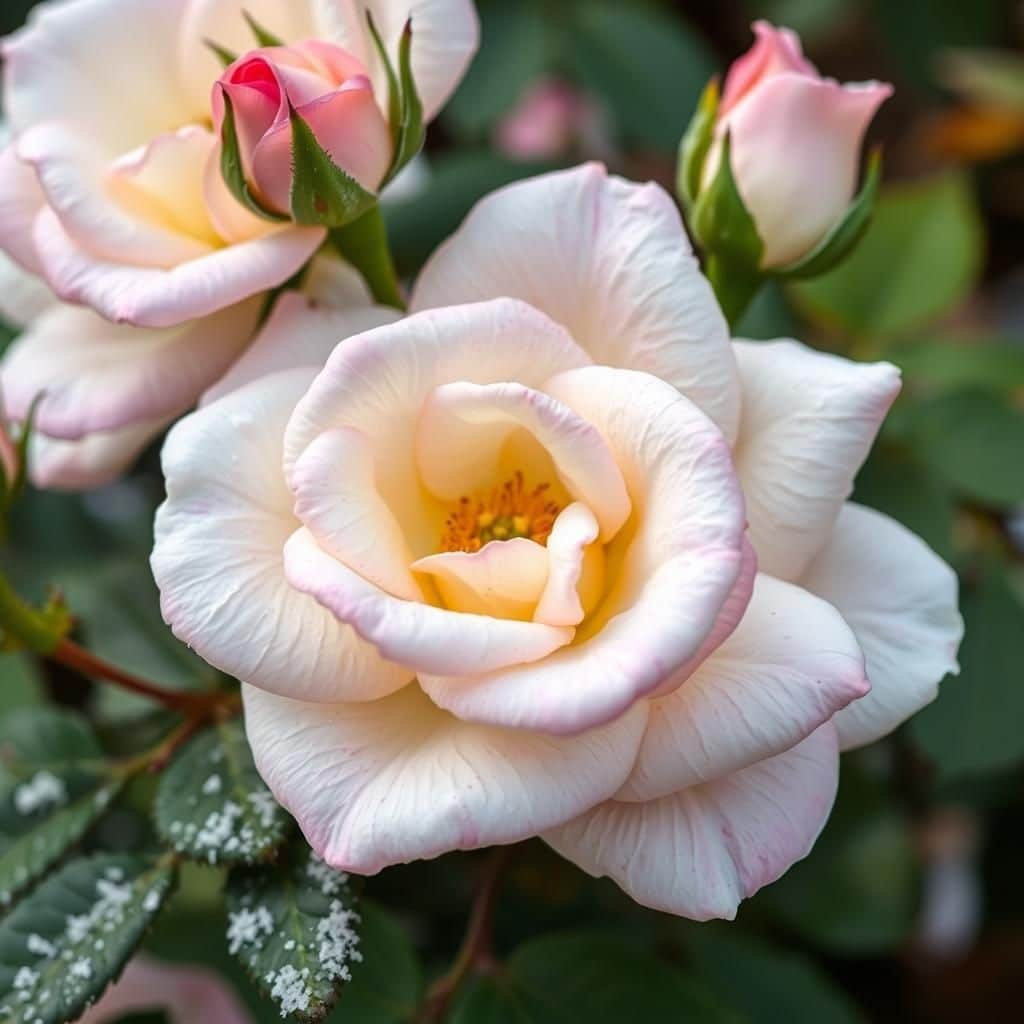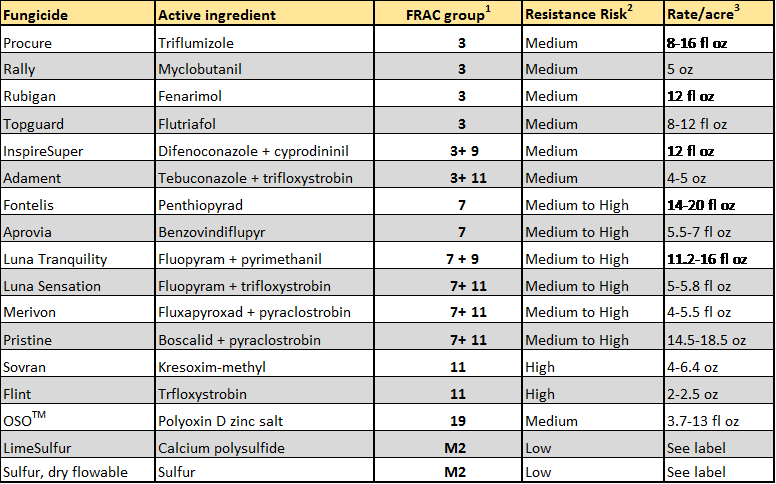Effective Powdery Mildew Treatment for Roses: Tips and Solutions

Powdery mildew is a common fungal disease that affects rose plants, leading to unsightly white patches and potentially compromising their health. This article will explore effective treatment strategies and preventive measures to combat this persistent issue. By understanding the causes and symptoms of powdery mildew, rose enthusiasts can implement practical solutions to protect their plants. From cultural practices and proper watering techniques to organic and chemical treatments, homeowners and gardeners alike will find valuable tips to ensure their roses remain vibrant and healthy. Discover the best approaches to treating powdery mildew and keep your garden flourishing throughout the growing season.
Effective Treatments for Powdery Mildew on Roses
Powdery mildew is a common fungal disease that affects roses, manifesting as white, powdery spots on leaves, stems, and buds. To combat this issue, it is essential to implement a combination of cultural practices and targeted treatments. Ensuring adequate air circulation, avoiding overhead watering, and maintaining healthy plants through proper fertilization and pruning can help minimize the incidence of this disease. Additionally, fungicides specifically formulated for powdery mildew can be applied as a preventive measure or when symptoms first appear. Organic options such as baking soda and neem oil are effective alternatives to chemical fungicides, promoting plant health without harming beneficial insects.
Identifying Powdery Mildew Symptoms
Recognizing the symptoms of powdery mildew is crucial for effective treatment. The fungal infection typically starts as small, white spots on the upper surface of the leaves before spreading and covering more extensive areas of the plant. In advanced stages, leaves may turn yellow and drop prematurely, impacting the overall health of the rose bush. Monitoring your plants regularly and acting quickly upon noticing these signs can significantly reduce the spread of the disease.
Cultural Practices to Prevent Powdery Mildew
Implementing good cultural practices plays a vital role in preventing powdery mildew. Ensuring that roses are planted with adequate spacing allows for sufficient air circulation, reducing humidity levels around the foliage. Additionally, watering at the base of the plant instead of overhead helps keep the leaves dry. Regularly removing fallen leaves and debris from around the plant can also minimize fungal spores in the environment, further safeguarding your roses.
Organic Treatment Options
Several organic treatments can effectively combat powdery mildew. One popular method is a solution of baking soda, which can be mixed with water and a few drops of liquid soap to enhance adhesion. Spraying this mixture on affected areas can inhibit fungal growth. Neem oil is another excellent organic option, acting as both a fungicide and a pesticide. Its natural properties can help deter powdery mildew while promoting overall plant health.
Chemical Fungicides for Powdery Mildew
When organic methods are insufficient or if the infection is severe, commercial fungicides specifically designed for powdery mildew can be utilized. Look for products containing Sulfur or myclobutanil, which are effective against this fungal disease. Always follow label directions for application rates and timing to ensure safety and effectiveness. Early treatment is essential to prevent the spread of powdery mildew and protect your rose plants.
Proper Plant Care and Maintenance
Maintaining healthy rose plants is crucial in preventing powdery mildew outbreaks. Regular pruning promotes air circulation and removes any infected tissue that can harbor the fungus. Additionally, ensuring your roses receive appropriate nutritional support through balanced fertilization can strengthen their resilience against diseases. Monitoring soil moisture levels and avoiding over-fertilizing can also help maintain optimal plant health, making them less susceptible to infections.
| Treatment Method | Type | Effectiveness |
|---|---|---|
| Baking Soda Solution | Organic | Effective against mild infections |
| Neem Oil | Organic | Effective and safe for beneficial insects |
| Sulfur | Chemical | Highly effective for severe cases |
| Myclobutanil | Chemical | Effective if applied early |
How do you get rid of powdery mildew on roses?

To effectively get rid of powdery mildew on roses, a combination of cultural practices, chemical treatments, and preventive measures should be utilized. Powdery mildew is a fungal disease that manifests as a white, powdery coating on leaves, stems, and buds of roses, often thriving in warm, dry environments with high humidity. Below are some approaches to manage and eradicate this troublesome fungus.
Understanding Powdery Mildew
Powdery mildew is caused by several species of fungi, predominantly belonging to the genus Sphaerotheca. It typically appears during warm weather conditions when there is a high level of humidity but dry leaves. The spores spread easily through the air, especially when the plants are crowded. Understanding its characteristics and development is crucial for implementing an effective management plan.
- Appearance: White, powdery spots on leaves, stems, and flowers.
- Conditions Favoring Growth: Warm temperatures with high humidity and poor air circulation.
- Host Plants: Affects various plants, especially roses, cucumbers, and other ornamental plants.
Cultural Practices for Prevention
Implementing cultural practices can significantly reduce the risk of powdery mildew. This includes proper watering, spacing, and pruning of plants to ensure adequate airflow. Keeping roses healthy is the first step to preventing diseases.
- Watering: Use drip irrigation or water at the base to keep foliage dry.
- Spacing: Ensure sufficient space between roses for air circulation.
- Pruning: Regularly prune to remove dead or infected leaves and improve air flow.
Homemade Remedies
There are several homemade remedies that can help manage powdery mildew on roses. These solutions are often safe for the plants and the environment.
- Baking Soda Solution: Mix 1 tablespoon of baking soda, 1 teaspoon of liquid soap, and 1 gallon of water; spray on affected areas.
- Milk Solution: Mix 1 part milk (preferably whole milk) with 9 parts water; spray on leaves. The proteins in milk can help suppress the fungus.
- Vinegar Solution: Mix 1 cup of white vinegar with 1 gallon of water; spray weekly until the mildew is gone.
Chemical Treatments
If the infestation is severe, you might need to resort to chemical treatments specifically formulated for powdery mildew. These fungicides can help eliminate the disease effectively but should be used sparingly and according to the instructions on the label.
See also:
- Preventive Fungicides: Use products that contain mancozeb, chlorothalonil, or other labeled antifungal agents.
- Treatment Fungicides: Apply fungicides containing myclobutanil or triforine to eradicate existing infections.
- Timing: Apply fungicides early in the season as a preventive measure, and during the outbreak for treatment.
Monitor and Maintain Plant Health
Regularly monitoring rose plants for signs of powdery mildew and maintaining their overall health is crucial for long-term success. A vigilant approach can help in catching the disease early and managing potential outbreaks effectively.
- Regular Inspections: Routinely check for early signs of powdery mildew, especially in late spring and early summer.
- Healthy Soil: Ensure the soil is well-drained and enriched with nutrients to strengthen the roses’ immune systems.
- Fertilization: Use balanced fertilizers to promote healthy growth and prevent stress, which can make roses more susceptible to diseases.
What is the most effective treatment for powdery mildew?
:max_bytes(150000):strip_icc()/powdery-mildew-1402500_FINAL-132e55a8e24b4392a79a41a3791e01b5.png)
The most effective treatment for powdery mildew involves a combination of cultural practices, chemical treatments, and natural remedies. Powdery mildew is a fungal disease that affects a wide range of plants and can severely impact their growth and yield. Here are several methods to effectively manage and treat this condition:
Understanding Powdery Mildew
Powdery mildew is caused by various species of fungi from the order Erysiphales. It appears as a white or grayish powder on the leaves, stems, and buds of affected plants. Understanding its life cycle and conditions favoring its growth is essential for effective management. Key factors include:
- High humidity: Powdery mildew thrives in conditions with high humidity and poor air circulation.
- Warm temperatures: The ideal temperature range for this fungus is between 60°F and 80°F (15°C to 27°C).
- Dense foliage: Plants that are closely spaced or have dense growth provide the optimal environment for the spread of powdery mildew.
Cultural Practices for Prevention
Implementing good cultural practices plays a crucial role in preventing powdery mildew. Consider the following strategies:
- Proper spacing: Ensure adequate spacing between plants to promote air circulation and reduce humidity.
- Water management: Water plants early in the day to allow foliage to dry quickly, minimizing humidity levels.
- Regular pruning: Prune plants to increase airflow and remove any infected plant material promptly.
Natural Remedies for Treatment
Natural remedies can be effective in managing powdery mildew without the use of harsh chemicals. Popular options include:
- Baking soda solution: Mix 1 tablespoon of baking soda with 1 gallon of water to create a spray that can inhibit fungal growth.
- Neem oil: This natural pesticide not only helps control powdery mildew but also pests; dilute according to instructions and apply.
- Milk spray: A mixture of 1 part milk to 2 parts water can be sprayed on affected areas to help suppress the fungus.
Chemical Treatments
If cultural practices and natural remedies are insufficient, chemical treatments may be necessary. Some effective fungicides include:
- Potassium bicarbonate: This compound can disrupt the fungal cell wall, effectively controlling the spread of powdery mildew.
- Sulfur-based fungicides: Highly effective against various fungal diseases, sulfur is best used in low temperatures to avoid plant burn.
- Systemic fungicides: Products containing ingredients like myclobutanil or propiconazole can provide long-lasting protection if applied correctly.
Monitoring and Maintenance
Regular monitoring and maintenance are essential for control and prevention. Key practices include:
- Regular inspections: Check plants frequently for early signs of powdery mildew to ensure immediate action can be taken.
- Environmental control: Adjust environmental factors like water and light to favor plant health and minimize fungal development.
- Fungicide rotation: To prevent resistance, rotate between different types of fungicides when treatment is necessary.
Can you use Dawn dish soap for powdery mildew?

Using Dawn dish soap for powdery mildew can be effective, but it’s important to understand how it works and the best practices for application. Powdery mildew is a common fungal disease that affects many plants, leading to reduced photosynthesis and overall health. Dawn dish soap, a household cleaning agent, is often considered for treating various plant issues, including fungal infections like powdery mildew.
Dawn contains surfactants that can help break down the waxy protective layers of the powdery mildew spores, allowing other treatments to penetrate more effectively. Additionally, its mild detergent properties can help to wash the spores away from the plant surfaces. However, before using it, consider the following guidelines:
Effectiveness of Dawn Dish Soap
Dawn dish soap can indeed be effective against powdery mildew, but its effectiveness may vary based on several factors.
- Concentration: The right dilution is crucial. Typically, a mixture of 1–2 tablespoons of Dawn dish soap in a gallon of water is recommended.
- Application timing: Applying it in the early morning or late afternoon can prevent any potential damage to the plants from sunlight.
- Regular treatments: Reapplication is necessary every week or after rainfall to manage and prevent powdery mildew effectively.
Alternative Treatments for Powdery Mildew
While Dawn dish soap can be helpful, there are alternative treatments available for powdery mildew that might also be effective.
See also:
- Neem oil: A natural remedy that targets the fungus while being gentle on plants.
- Baking soda: A mixture of baking soda and water can create an alkaline environment that hinders fungal growth.
- Commercial fungicides: Various products are designed specifically to tackle powdery mildew and may offer quicker results.
Precautions When Using Dawn Dish Soap
Using Dawn dish soap requires certain precautions to prevent harming the plants.
- Test on a small area: Always test the soap solution on a small section of the plant to check for any adverse reactions.
- Avoid sensitive plants: Some plants may be more sensitive to soaps, so avoid using it on known delicate species.
- Monitor for side effects: After application, monitor plants closely for any negative effects such as leaf scorch or wilting.
How to Apply Dawn Dish Soap for Powdery Mildew
Proper application techniques can help maximize the effectiveness of Dawn dish soap against powdery mildew.
- Prepare the solution: Mix 1-2 tablespoons of Dawn in a gallon of water thoroughly.
- Use a spray bottle: A spray bottle allows for even coverage of the affected areas.
- Coat the leaves: Ensure that both the top and bottom surfaces of the leaves are covered, as this is where powdery mildew often resides.
Post-application Care for Affected Plants
After treating plants with Dawn dish soap, it's essential to provide proper post-application care.
- Watering: Ensure plants are well-hydrated but avoid overhead watering immediately after treatment.
- Fertilization: Healthy plants can resist diseases better, so consider fertilizing with a balanced nutrient mix.
- Observing plants: Keep a close watch on the treated plants for any signs of returning powdery mildew or other issues.
What is the most effective fungicide against powdery mildew disease?

The most effective fungicide against powdery mildew disease typically includes a variety of active ingredients formulated specifically to target the fungus responsible for the disease. One widely recognized option is nano-silver, which has shown effectiveness in controlling powdery mildew due to its ability to inhibit fungal growth. Other common choices include potassium bicarbonate, sulfur, and triazole fungicides.
For optimal results, it's crucial to follow the manufacturer's guidelines and consider the specific plant species being treated. Resistance can develop with overuse of a particular fungicide; therefore, it's advisable to rotate different types of fungicides for better long-term control.
Types of Fungicides for Powdery Mildew
Fungicides can be broadly categorized into several types, including:
- Contact Fungicides: These need to be applied directly onto the fungus and prevent infection.
- Systemic Fungicides: These are absorbed by the plant and can provide wider protection against future infections.
- Biological Fungicides: These use naturally occurring organisms to suppress fungal pathogens.
Application Timing and Frequency
Effective management of powdery mildew also relies on proper application timing and frequency:
- Early Intervention: The sooner you apply fungicides after noticing the first signs of powdery mildew, the better.
- Regular Monitoring: Regularly check plants for signs of infection to determine the need for reapplication.
- Weather Considerations: Fungicides are often more effective in dry conditions, as high humidity can promote fungal growth.
Combining Treatments for Better Efficacy
In some cases, combining fungicides with other treatment methods can enhance their effectiveness:
- Use of Horticultural Oils: Applying oils can suffocate the spores and improve fungicide penetration.
- Implementing Cultural Practices: Ensure good air circulation and reduce humidity around plants to lower infection rates.
- Organic Options: Consider integrating organic fungicides alongside conventional options for a more holistic approach.
Potential Phytotoxicity Issues
It's vital to be aware of phytotoxicity, which can occur when fungicides adversely affect plant health:
- Read Labels Carefully: Each fungicide has specific instructions regarding safe use and potential risks.
- Test Small Areas: Always test the fungicide on a small part of the plant before wide application.
- Avoid Mixing Incompatible Products: Certain combinations can increase the risk of plant damage.
Resistance Management Strategies
To prevent the development of resistance in fungi, it is essential to apply resistance management strategies:
- Rotate Fungicides: Use different classes of fungicides with distinct modes of action.
- Integrate Other Control Methods: Combine chemical controls with biological and cultural practices.
- Limit Repeated Applications: Avoid using the same fungicide repeatedly on the same plants.
Questions from Our Readers
What is powdery mildew and how does it affect roses?
Powdery mildew is a fungal disease that appears as a white, powdery coating on the leaves, stems, and buds of roses. It thrives in conditions of high humidity and poor air circulation, leading to stunted growth and reduced flowering if not addressed promptly.
How can I treat powdery mildew on my roses?
To treat powdery mildew on roses, you can use fungicides that are specifically formulated for this type of fungus, or apply natural remedies such as a baking soda solution. It's important to ensure that you prune affected areas and improve air circulation around the plants to help prevent further outbreaks.
See also:
Can I prevent powdery mildew on my roses?
Yes, preventing powdery mildew involves several strategies, such as planting roses in well-drained areas with adequate sunlight, ensuring proper spacing between plants for air circulation, and watering early in the morning to keep foliage dry. Regularly checking for early signs of the disease can also help in taking timely action.
Is it safe to use home remedies for treating powdery mildew?
Many home remedies, such as a mixture of water and baking soda, or a solution of water and dish soap, can be effective and safe for treating powdery mildew. However, it’s essential to test these remedies on a small area first to ensure they don’t harm the roses, and always follow up with proper plant care practices.
https://youtube.com/watch?v=hAEjz1JkcrI
If you want to read more articles like Effective Powdery Mildew Treatment for Roses: Tips and Solutions, we recommend you check out our Gardeners category.
Leave a Reply
Related Articles